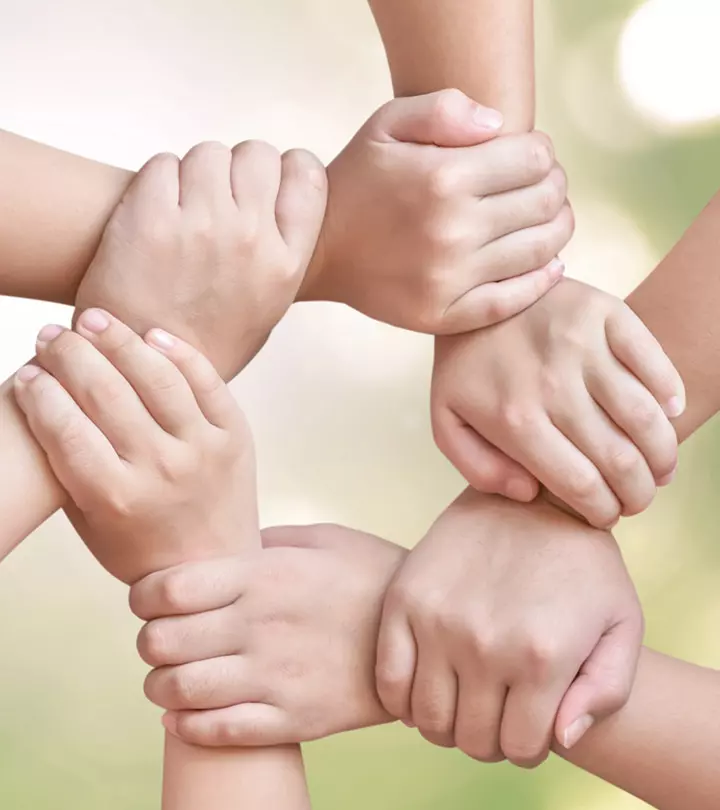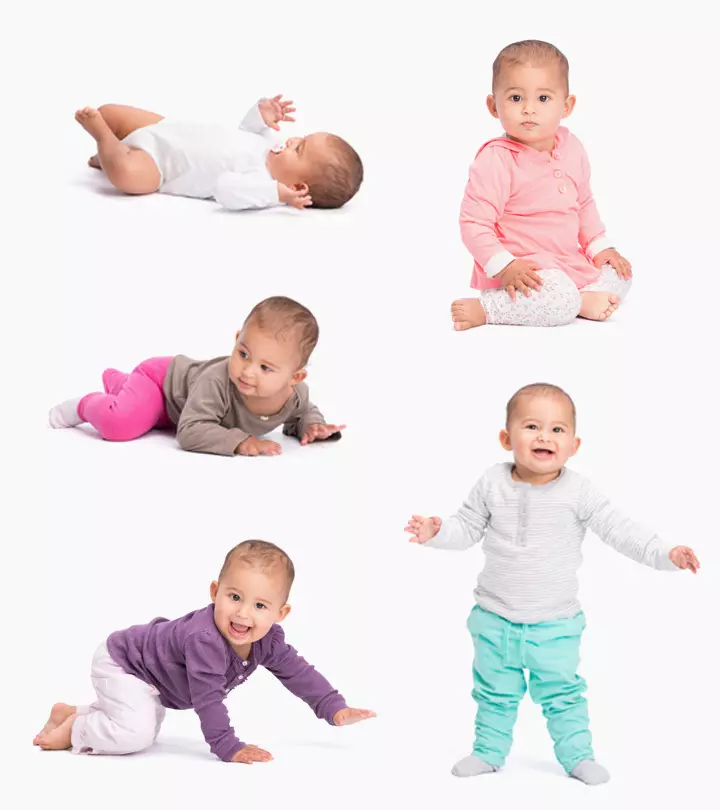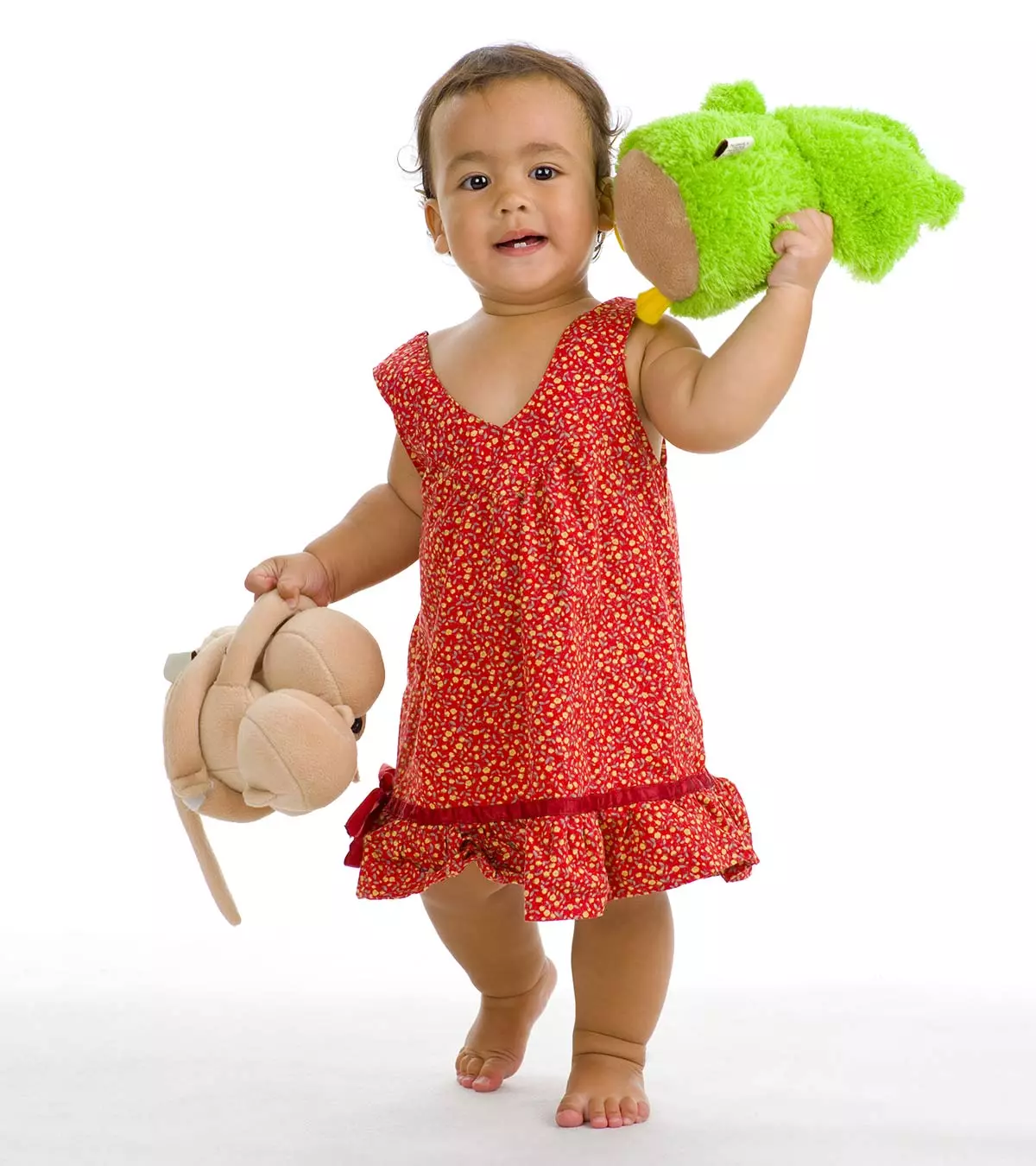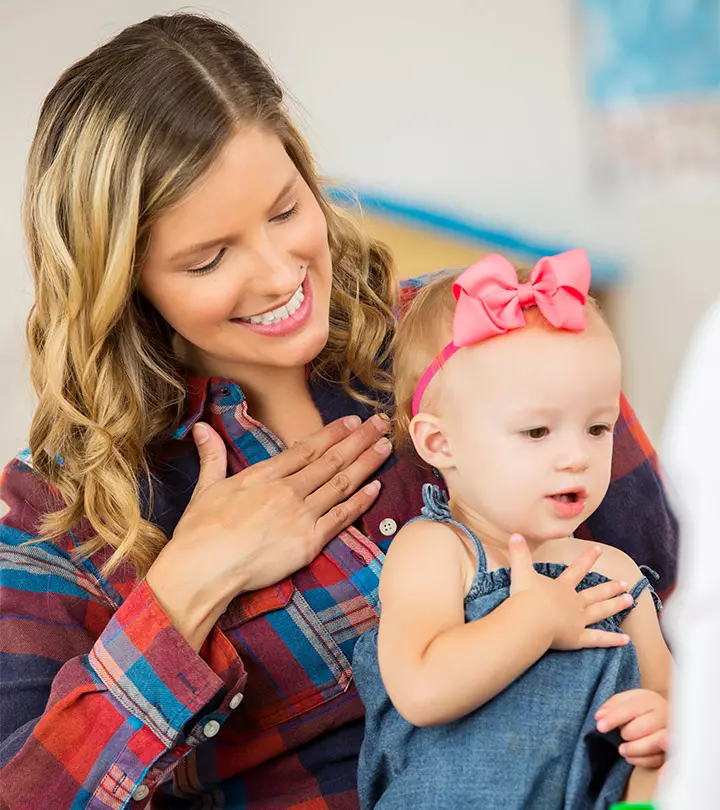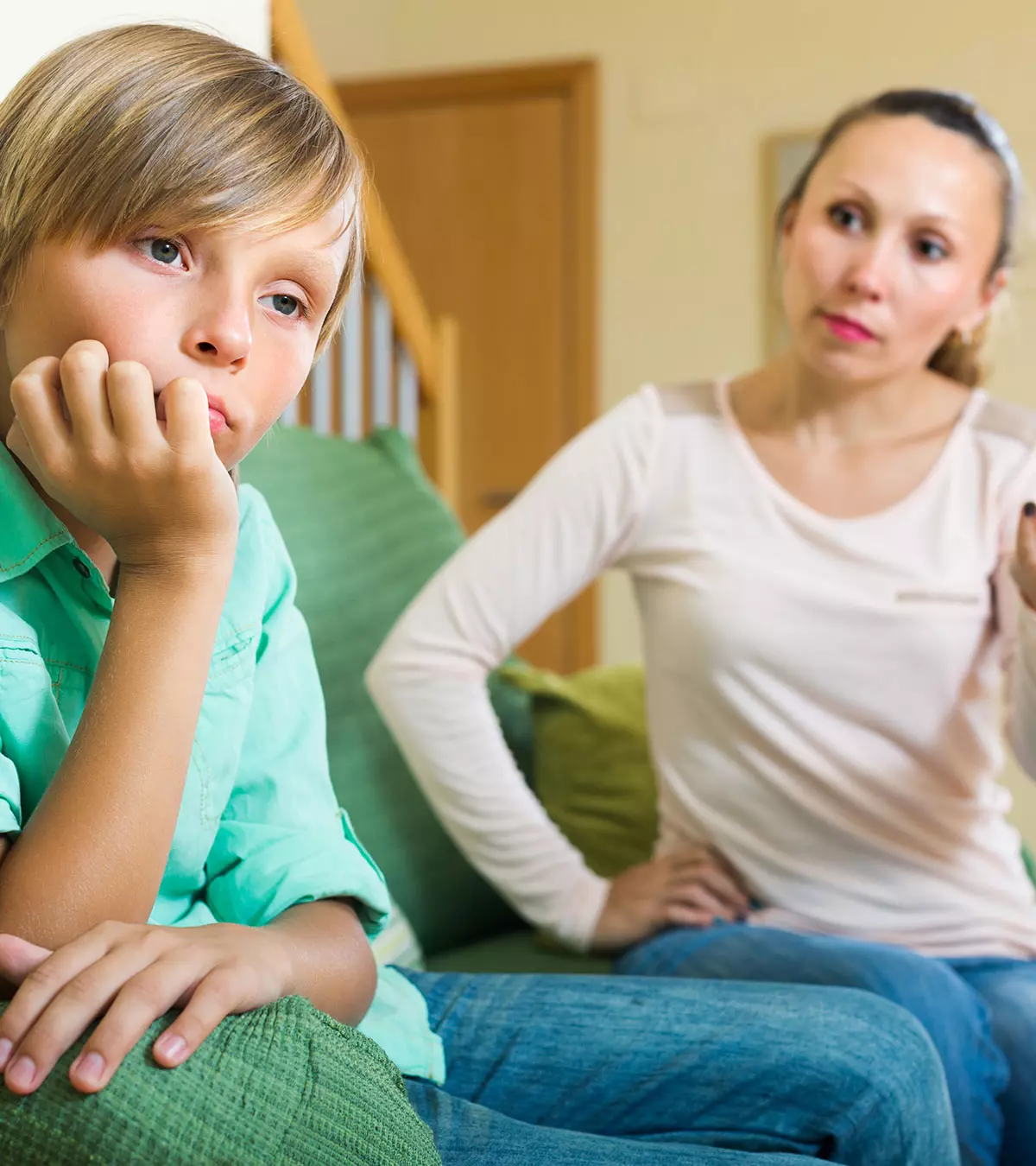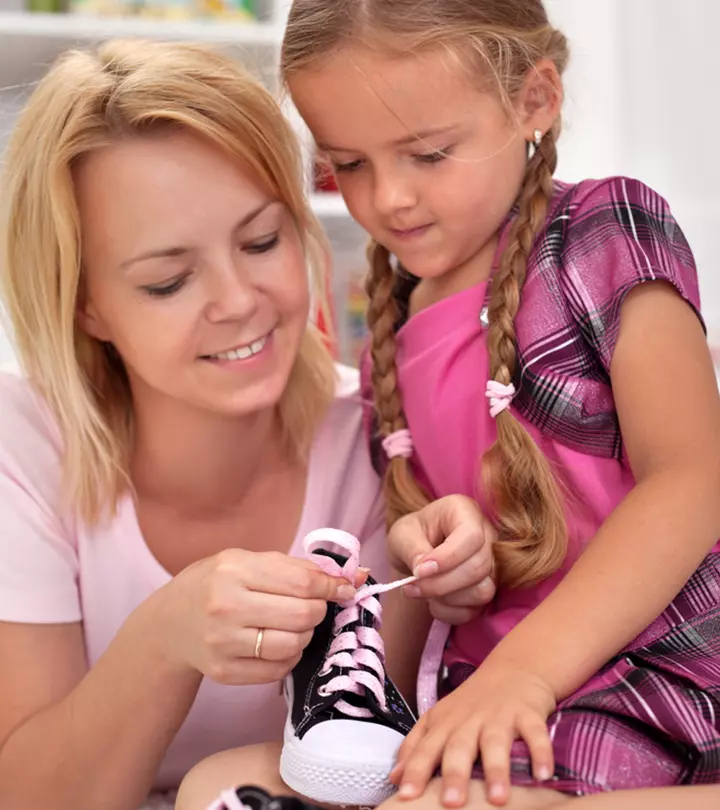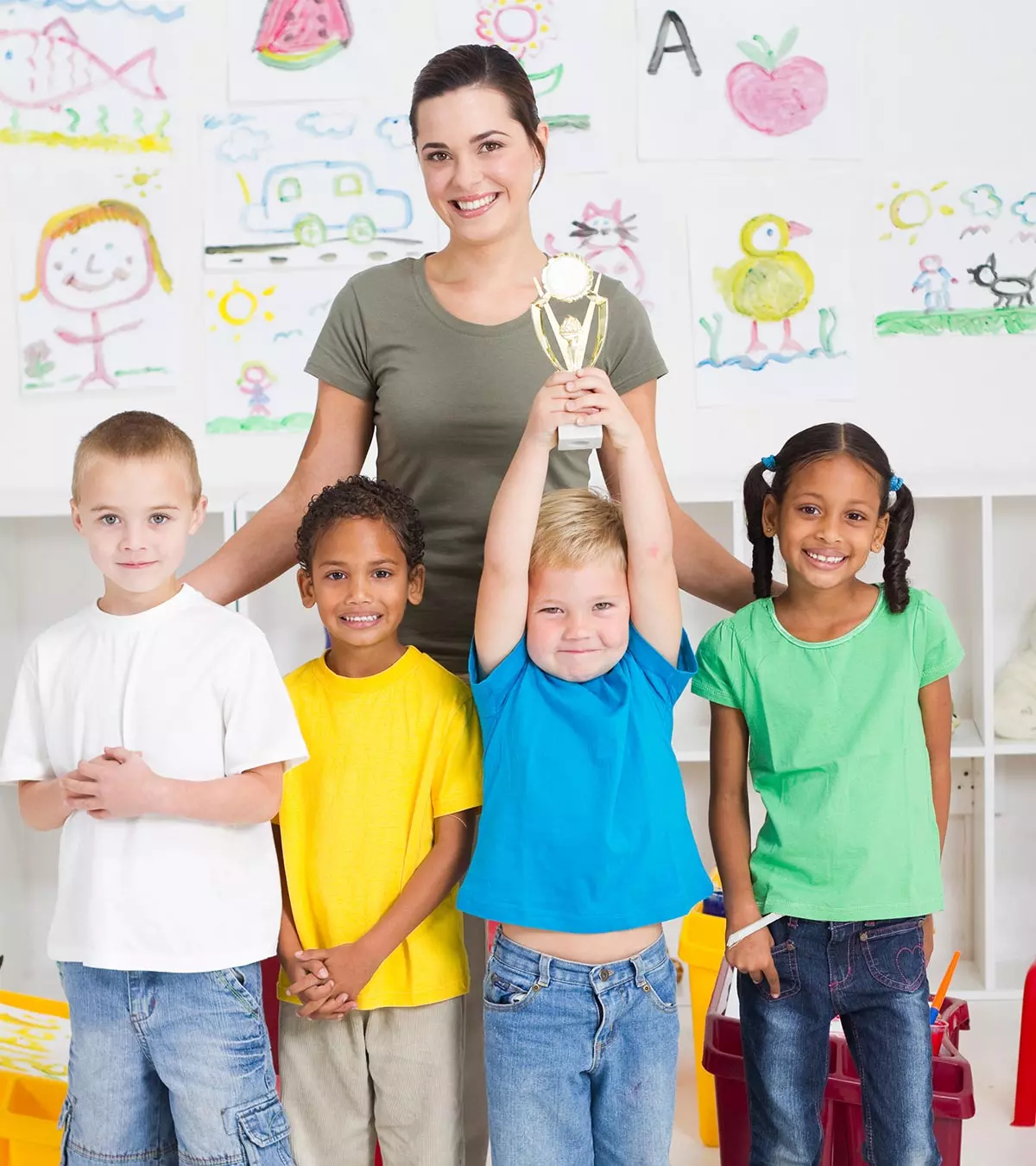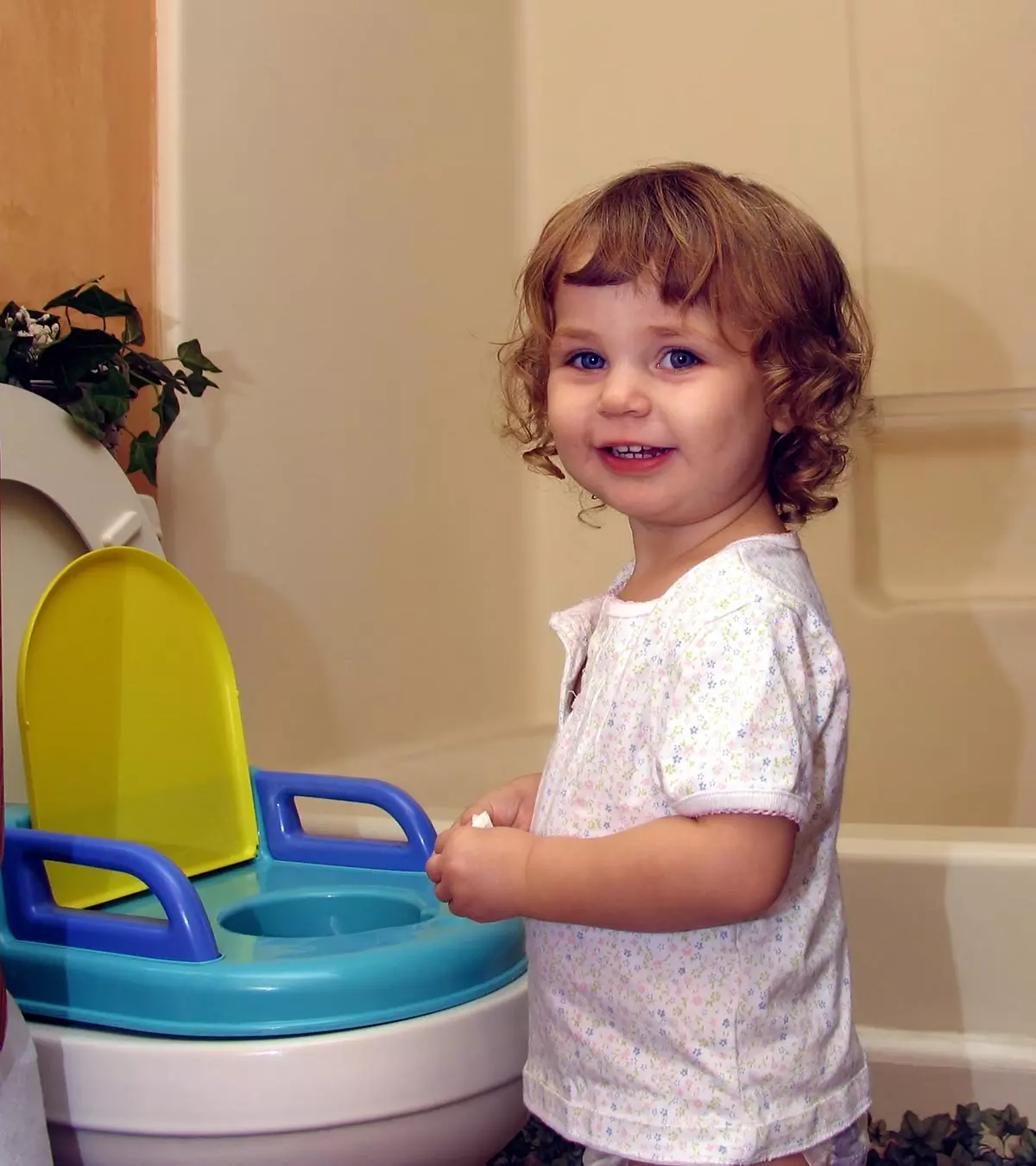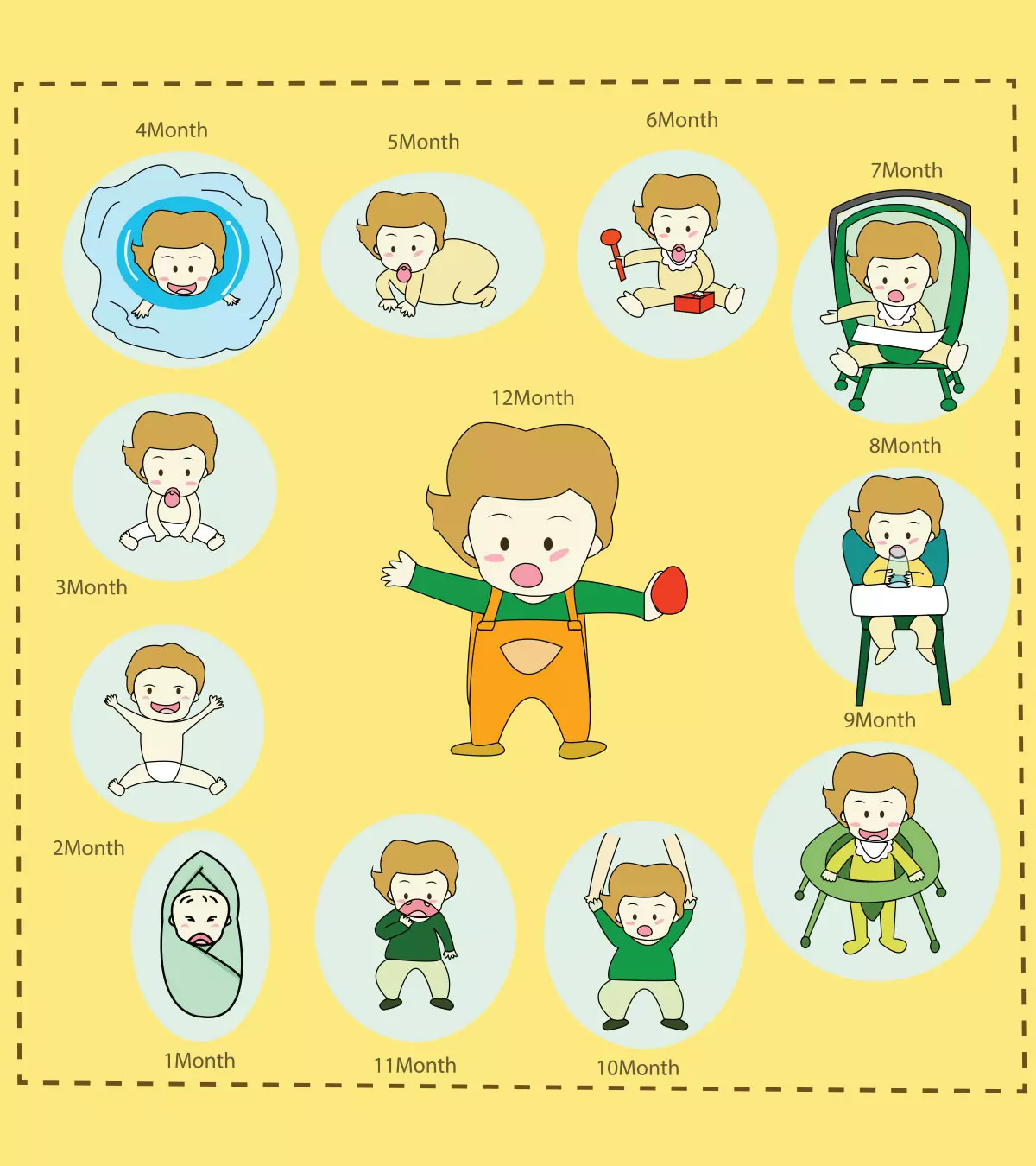
Image: Shutterstock
If you are a mother, you may find yourself checking on your kid’s growth and development now and then. However, the developmental stages of children may vary, and not all kids may develop a particular skill around the same time. If your child is a little late in learning to walk or cooing, do not panic, as some children achieve their milestones slightly later than others. Altogether, paying attention to the various phases of development during infancy and beyond could help you ensure that your little one is growing in the right way. A child’s development could be categorized into fine motoriA skill where one needs to use the small muscles in hands, fingers, and wrist , gross motoriAbilities that let us do tasks where one needs to engage the large muscles in the legs, arms, and torso , speech, cognitive development, and social interaction. Delve into this post as we bring you a list of the child’s developmental stages.

Key Pointers
- Children’s developmental stages vary, and not all children develop skills at the same time.
- By ten months, babies can crawl, stand, love to play, and babble a lot, but they may also display stranger anxiety.
- At two years old, children should be able to walk or run independently, and parents can start having conversations with them.
- At four years old, children can eat and mash their food, and they are often inquisitive about everything.
- At six years old, children are typically independent and can talk fluently, even spell their name.
12 Major Developmental Stages Of Children
We have listed the major developmental stages of children. Want to know more about them? Read on!
1. One to two months
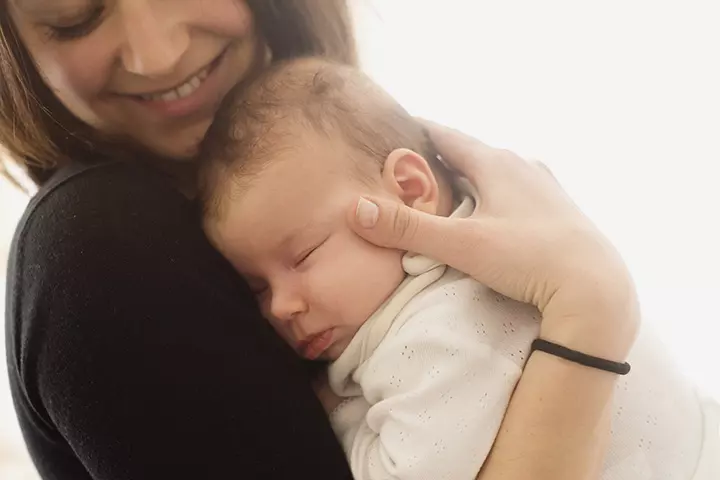
Between the time a baby is born until they are two months old, they may develop the following skills (1) (2):
Motor Skills: Your infant may hold their head erect and steady when you hold them upright. This is basically known as neck holding.
Language Skills: They may coo, make gurgling sounds, and turn their heads towards the directions of the sound. This is a good indicator of the child’s hearing.
Social Skills: Now is the time for ‘stranger’ love! Remember that infants show a lot of curiosity. Your infant will love looking at new faces. She may even start giving hints of a smile at this stage!
2. Three months

By the time your infant is three months old, they may (3):
Motor Skills: Lift their head and chest when lying flat on their tummy. They can basically support their body with two hands. They may also roll from side to back and bring their hand to their mouth.
Language Skills: It is time when your munchkin will start practicing their language skills, experience sensory development, and begin to babble and imitate some sounds.
Social Skills: Your three-month-old may already be on their way to becoming a social person. They love looking at new faces and smiles too. They may also imitate some movements and facial expressions like crowning and frowning.
Amber Massey, a mom of four children, shares the different developments she has observed in her son, Brady Jordan, who is three-months-old. She says, “Brady’s eating about 5 to 7 times every day and 3 of those are from the bottle. He smiles in response to anyone saying hello and talking to him in a sweet voice, he especially loves looking at and ‘chatting’ with his sisters. He’s got awesome head and core control and can be held on my hip without being too floppy. Brady totally tries to mimic his sisters. He bats at the hanging toys and will even shake his toys that make noise (i).’’
3. Three to five months
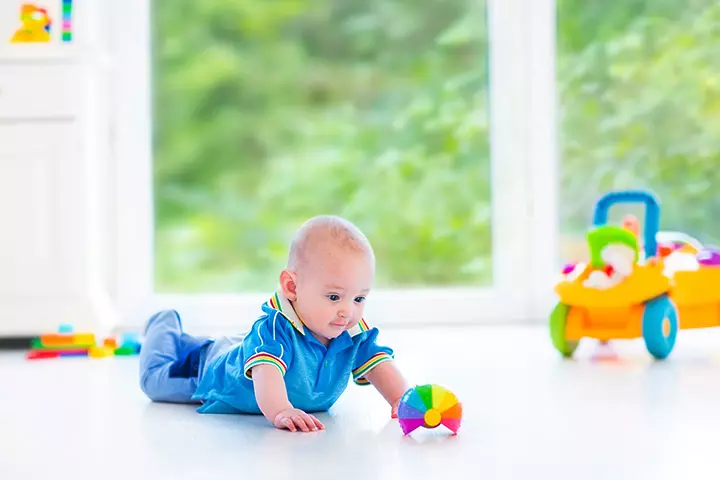
The period between three months and five months is pretty intense for development!
Motor Skills: Be ready for some rock and roll! At this age, your baby is likely to roll from her tummy to her side! She may also learn to prop herself on her elbows, lift and even hold her head for some time. The child can sit with support.
Language Skills: She may make sounds like ‘eee-ahhh’, blow bubbles, and have an adorable belly laugh!
Social Skills: Your baby may be at their most social behavior at this stage. They may play with people and might start crying when playing stops. She will recognize strangers.
 Point to consider
Point to consider4. Six months
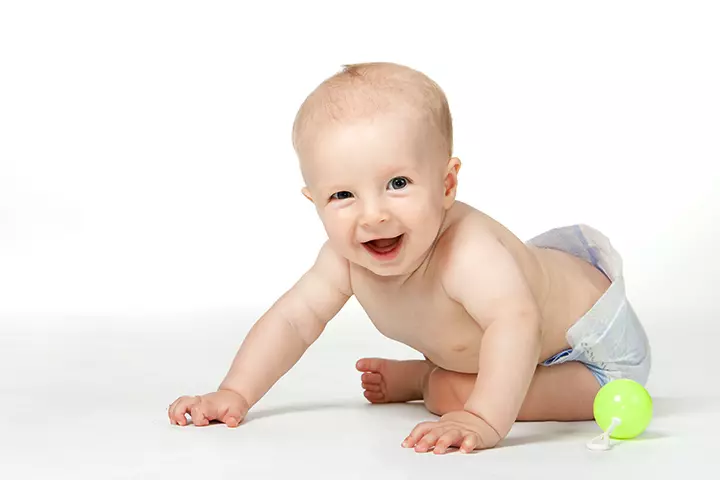
The first half of your baby’s first year passed smoothly! You can heave a sigh of relief and watch out for the following activities your baby may do now:
Motor Skills: The baby can now roll over from front to back and back to front. They may transfer objects from one hand to another and pull themselves into a sitting position and sit without support.
Language Skills: Get ready for some noise! Your baby can now string vowels together when babbling. In addition, they begin saying consonant sounds like “ah,” “eh,” “oh,” and respond to their names.
Social Skills: An indicator of things to come! Your baby may show the first signs of stranger anxiety, which is an indicator of normal maturation. They can now identify familiar faces and know if someone is a stranger. They may or may not be comfortable with strangers.
They like looking in the mirror and begin responding to other people’s emotions.
5. Nine to ten months
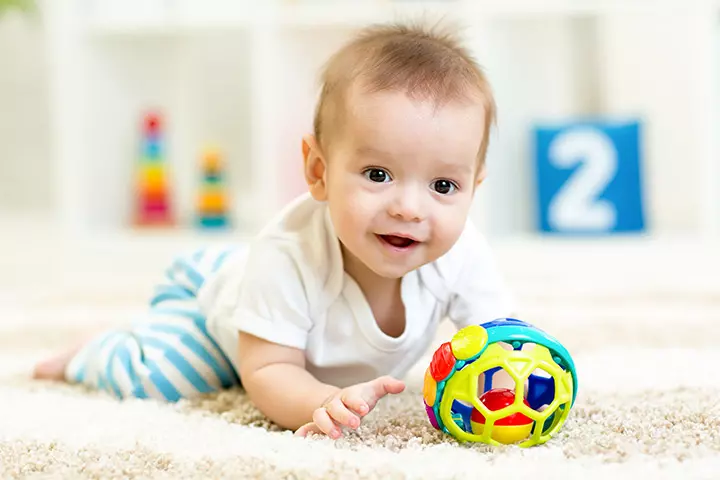
Now is the time to babyproof the house (4)!
Motor Skills: Most babies will start crawling between eight to ten months. So, between nine and ten months, your baby can begin crawling, can pull to stand, and stay standing by holding on to support. Your baby may also learn to pick up objects with their thumb and index finger (pincer grasp). They may move things from one hand to another.
Language Skills: By now, you would likely master the art of babbling and start understanding the meaning of “no.” They will also begin making different sounds like “mamamama” and “bababababa.”
Social Skills: With stranger anxietyiThe distress a baby experiences when an unfamiliar person approaches in full swing, your baby may become super clingy at this stage.
6. One year
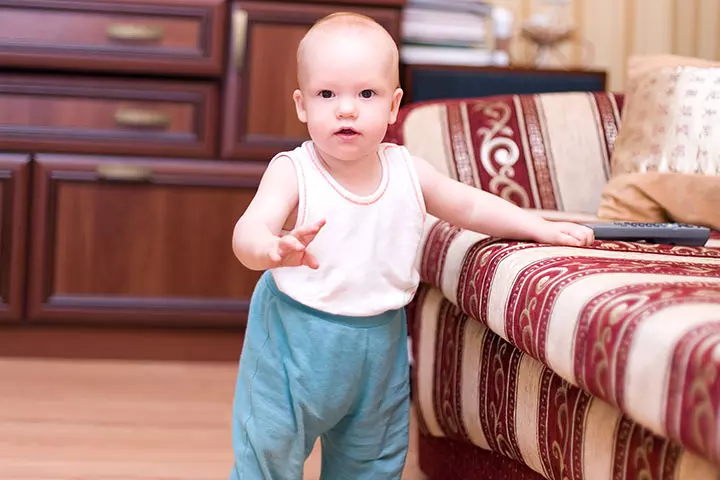
Yay! It’s your baby’s first birthday! Check out the developmental milestones in a baby’s first year that mark their growth and progress.
Motor Skills: They can creep on the belly and assume hand and knee position. They may be pulling themselves to stand and walk, holding on to furniture. Some toddlers can even take a step or two without the support and may stand alone. They can bang two cubes.
Language Skills: During toddlerhood, language skills develop rapidly. They may be babbling two or three words all the time (and no, the words need not make sense!). They may try to repeat the word you say and make sounds with changing tone. They may say dada and mama.
Social Skills: Dressing should be fun at this age! Your toddler will finally begin to cooperate while you dress them. They may also wave goodbye and understand simple commands. They may also have favorite toys and people and play games such as “peek-a-boo” and “pat-a-cake.” This is also a foundation period for identity formation.
 Do remember
Do remember7. Eighteen months
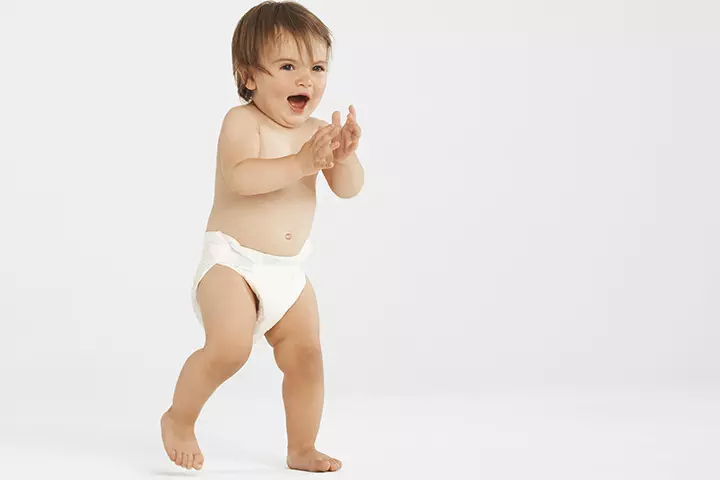
Motor Skills: By 18 months, most toddlers learn to walk without support. They may also pick up toys without sitting down, walk up and down the stairs, and can even run! They can also throw a ball and stack three or four cubes to build a tower! In addition, they can eat with a spoon and drink with a cup.
Language Skills: Your toddler may be speaking many single words by now. Some of them may even be intelligible. They can follow simple instructions such as “Give me the toy.” They can point at the object and tell someone what they want and say and shake their head in “no.”
Social Skills: Your toddler needs you all the time! They can now show temper tantrums and behave clingy in a new situation. They can show affection to familiar people and engage in exploration with parents or a caregiver. They may move away from you but make sure you are closeby. They may point out interesting things to you.
8. Two years
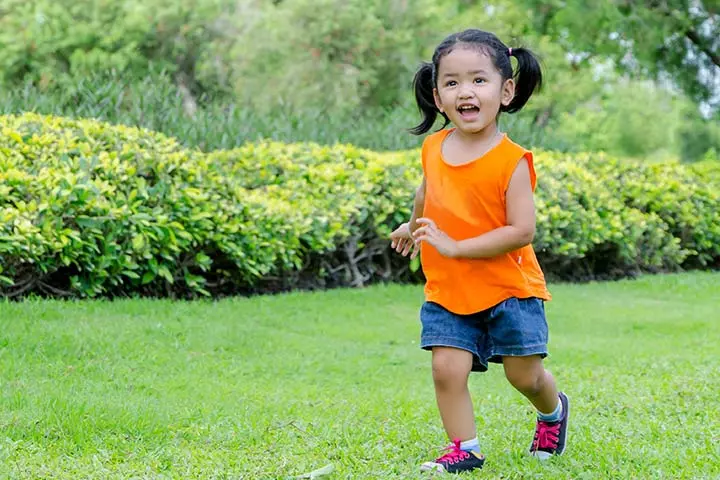
The terrible two are here! What to expect? Check out!
Motor Skills: Your toddler is running now! They run alone. Can stand on tiptoe. Normal physical development in infants at this age means being proficient with leg control and the ability to tiptoe and kick a ball. They can pull toys. Also, they can climb onto and down the furniture without help. In addition, they can make or copy circles and straight lines. They can build blocks and improve on problem-solving skills.
Language Skills: You can finally have a conversation with your child! They may be able to join two-three words together to form a sentence and repeat words they overheard in conversation. Other signs of language development are knowing the names of familiar people, objects, and even body parts.
Social Skills: Time to save up on diapers! Many toddlers learn to be dry by day during this age. Besides, they may exhibit signs of growing independence, such as defiant behavior. You might witness their sharp memory and their reasoning skills. They can also now begin to play games with other children. Social interactions increase with other kids. Such developments fuel their imagination and creativity. They may also experience moral development by now.
 Do remember
Do remember9. Three years
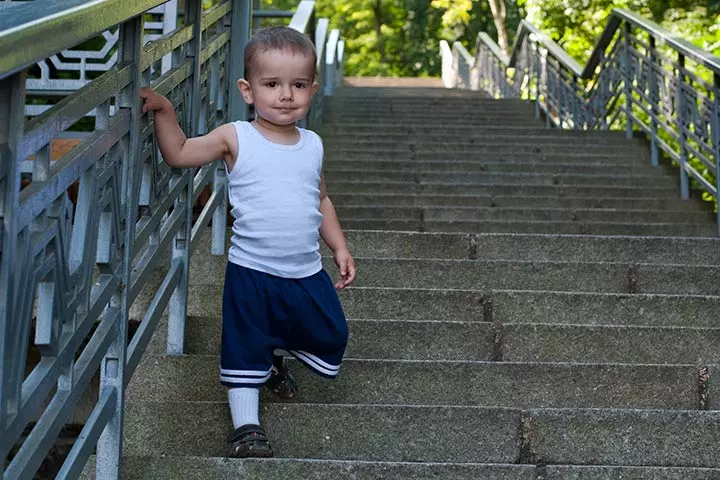
Three is a fun age and also a time of rapid development of executive function skills like adapting to new situations and abstract thinking.
Motor Skills: By three, your toddler should be able to imitate hand motions and draw a man! They may be able to stack nine cubes to make a tower too. Also, preschool children can climb up and downstairs with one foot on each step and pedal a tricycle.
Language Skills: Tired of your three-year-old’s questions? It is just the beginning! Your preschooler may speak in complete sentences now. They can name the most familiar things and understand the literal meaning of the words like “in,” “on,” and “under.”
Social Skills: Your toddler may still need your help, but they are getting there when it comes to dressing and undressing without help. They can take turns in games, show concern for a crying friend, and understand the idea of “mine” and “his” or “hers.”
10. Four years
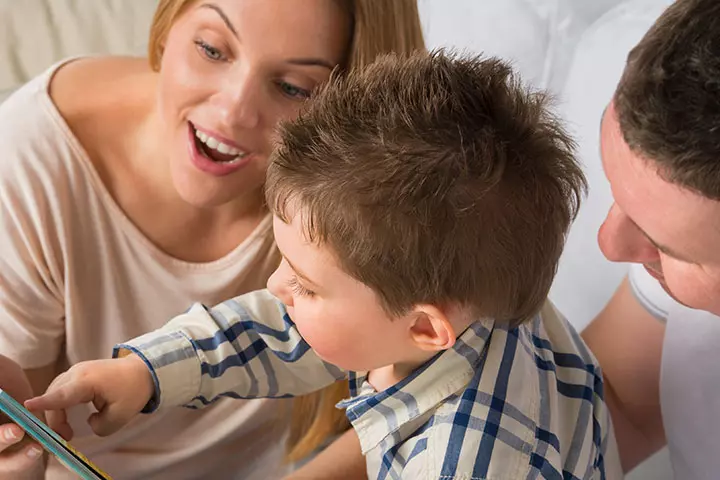
Your child is four! What should she be doing now?
Motor Skills: Most four-year-olds can skip on one foot and catch a bounced ball most of the time. Their fine motor development can also include pouring and mashing their food under supervision.
Language Skills: Your cute kid is now a question bank! They are inquisitive about everything at this age. They can tell stories and knows some basic rules of grammar, such as correctly using “he” and “she.” Parents should start instilling school readiness in children during this age.
Social Skills: They may be able to dress by this age. But most kids can dress and undress with assistance and are mostly potty trained by four years. Besides, they talk about what they like and are more and more creative with the make-believe game.
11. Five years
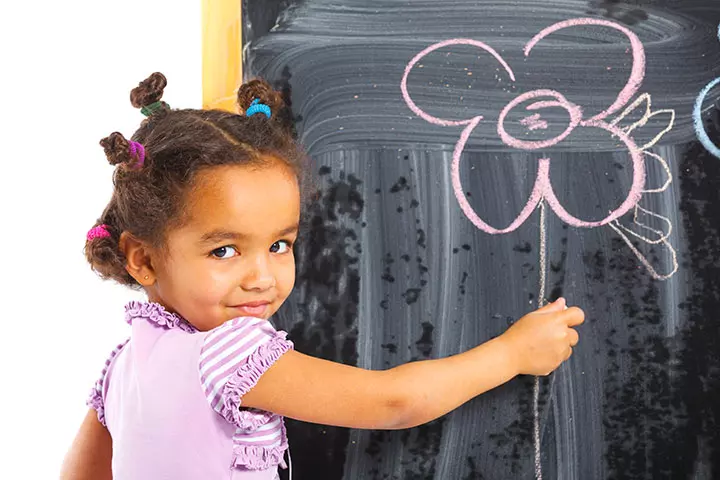
Early childhood is almost over. Most of your child’s mental and physical developments are at their peak now.
Motor Skills: At five, your kid may learn to skip on both feet and hop too. They can do a somersault and can swing and climb. They may also be able to draw something intelligible! Several children at this age can also use the toilet on their own.
Language Skills: Your child’s learning abilities are growing and they can learn new words every day now. Their speech is fluent by age five, and they are equipped enough to use past tense while talking.
Social Skills: At this age, they may be able to dress and undress without help. They like to have peer relationships, some degree of autonomy, and are likely to agree with the rules. They act very independently and can act demanding sometimes and cooperative other times. By this age, children also develop a sense of self-esteem similar to adults.
 Did you know?
Did you know?12. Six years
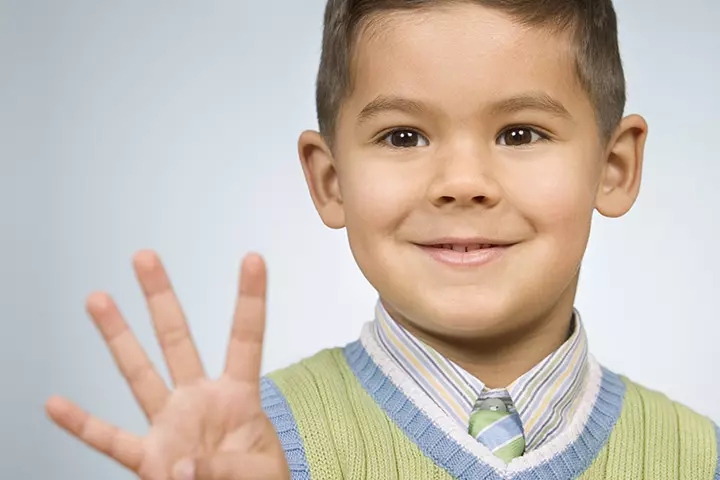
Six years! Where did time fly?
Motor Skills: Your child can now control major muscles, balance, and enjoy activities like jumping and running (5).
Language Skills: During the middle childhood period, they can talk fluently and speak correct grammar most of the time. They can spell their first name and write some letters and numbers.
Social Skills: Your child is mostly independent at this stage and is on their way to becoming a mini-adult. The social development at this stage involves acquiring a sense of humor and they may begin to progress with emotional development.
Frequently Asked Questions
1. What are the signs of developmental delays in children?
A few signs of developmental delays in children include lack of eye contact, poor gestures, problems imitating speech or actions, underdeveloped speech, difficulties in tone and voice control, and issues with following instructions. Infants and toddlers also usually show improper muscle control causing delays in sitting, crawling, and walking, persistent drooling, and a lack of imitative play (7) (8). Be vigilant of these signs to ensure timely intervention.
2. How can parents or caregivers best support a child’s language development?
Parents can support a child’s language and literacy development during their developmental stages through regular communication with the child, imitation of songs or actions, having long conversations with the child, reading to the child, and avoiding baby talk (7).
3. What are the differences in developmental stages between boys and girls?
According to various sensory and cognitive development assessments, girls tend to display slightly higher levels of advancement. Female infants often exhibit heightened abilities in vision, hearing, memory, smell, and touch compared to their male counterparts. Additionally, girl babies generally show greater social sensitivity, more responsiveness towards human voices or faces, and more intense reactions when hearing another infant cry. Furthermore, girls typically lead in developing fine motor skills and language abilities compared to boys (7).
4. How can early intervention help children struggling with their development?
Early intervention programs are designed to identify developmental delays, disabilities, or challenges at an early stage. This allows professionals to assess a child’s needs and provide appropriate and timely support. Professionals such as speech therapists, occupational therapists, psychologists, or special educators work closely with the child and their family to create an individualized plan. This personalized approach helps address specific developmental areas requiring support.
5. What role do genetics play in a child’s development?
Genes play a significant role in a child’s development. They provide the blueprint for the child’s physical traits, such as height, eye color, and hair color. Additionally, genetics influence various aspects of a child’s development, including their susceptibility to certain diseases, cognitive abilities, personality traits, and behavioral tendencies (8).
Looking at the developmental stages of children, you need to ensure not only the age-appropriate height and weight of kids but also that your kids are achieving their motor, social, and language skills as well with their growing age. While the early childhood development phases, i.e., till the age of five to six years, may appear to be a long period after childbirth, it will pass you by before you realize it! Therefore, unless your child is very late in accomplishing their developmental milestones, enjoy these precious years rather than being worried too much.
Infographic: Language Skills Through The Stages Of Childhood Development
Language skills undergo significant development throughout childhood, right from infancy, to help children learn to communicate and express themselves. This infographic explores the language skills that develop with the major stages of childhood development. Understanding these stages can help you support and foster language development in your children as they grow.

Illustration: Momjunction Design Team
Watch this informative video to learn about all the important developmental milestones your child should reach as they grow. Discover the ways to help your child reach their full potential!
Personal Experience: Source
MomJunction articles include first-hand experiences to provide you with better insights through real-life narratives. Here are the sources of personal accounts referenced in this article.
i. Brady Jordan | 3 months.https://themasseyspot.blogspot.com/2017/06/brady-jordan-3-months.html
References
- Milestone Checklists.
https://www.cdc.gov/ncbddd/actearly/pdf/FULL-LIST-CDC_LTSAE-Checklists2021_Eng_FNL2_508.pdf - Developmental milestones.
https://www.acecqa.gov.au/sites/default/files/2018-02/DevelopmentalMilestonesEYLFandNQS.pdf - Developmental Milestones: 3 Months.
https://www.healthychildren.org/English/ages-stages/baby/Pages/Developmental-Milestones-3-Months.aspx - 9-10 months: baby development.
https://raisingchildren.net.au/babies/development/development-tracker-3-12-months/9-10-months - Milestones for 6-Year-Olds.
https://www.mottchildren.org/health-library/ue5723 - Screening and Diagnosis of Autism Spectrum Disorder.
https://www.cdc.gov/autism/diagnosis/?CDC_AAref_Val=https://www.cdc.gov/ncbddd/autism/screening.html - Are there any differences in the brain development of boys’ and girls’?
https://www.zerotothree.org/resource/are-there-any-differences-in-the-brain-development-of-boys-and-girls/attachment/are-there-any-differences-in-the-development-of-boys-and-girls-brains-2/ - The impact of Genetics on child development
https://www.theedadvocate.org/the-impact-of-genetics-on-child-development/ - Child Developmental Milestones & Safety
https://my.clevelandclinic.org/health/articles/22628-child-developmental-milestones–safety-age-4-10-years
Community Experiences
Join the conversation and become a part of our nurturing community! Share your stories, experiences, and insights to connect with fellow parents.
Read full bio of Dr. Mubina Agboatwalla
Read full bio of Sagari Gongala
Read full bio of Harshita Makvana
Read full bio of Apoorva K







